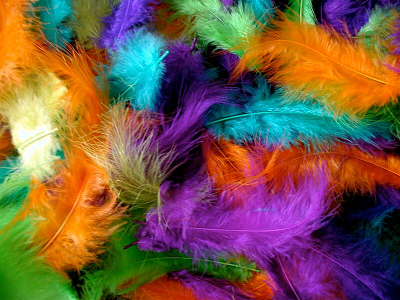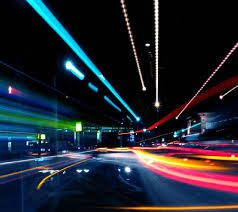 Without jumping in stormy waters of attempting to answer questions like “Can visually-impaired people have colored dreams”, let’s consider the effects of colors on our subconscious states and the most commonly-interpreted meanings of these dreams. Colors in dream interpretation are usually closely associated with parallel symbolic elements of a dream and, generally speaking, it is common that certain colors add to the emotional charge of a dream, thereby detailing and making dream recollections more saturated and prominent, but not necessarily easier to interpret. Rather than trying to focus on particular colors or colors in isolation, it is more interesting and thought-provoking to outline some of the most frequently recalled and discussed color associations, combinations and patterns in dream interpretation.
Without jumping in stormy waters of attempting to answer questions like “Can visually-impaired people have colored dreams”, let’s consider the effects of colors on our subconscious states and the most commonly-interpreted meanings of these dreams. Colors in dream interpretation are usually closely associated with parallel symbolic elements of a dream and, generally speaking, it is common that certain colors add to the emotional charge of a dream, thereby detailing and making dream recollections more saturated and prominent, but not necessarily easier to interpret. Rather than trying to focus on particular colors or colors in isolation, it is more interesting and thought-provoking to outline some of the most frequently recalled and discussed color associations, combinations and patterns in dream interpretation.
Black and white dreams. Based on traditional dream interpretation sources, black and white dreams are indications of mundane and uneventful existence the dreamer is immersed in. Having colored dreams has always been explained as the fact that a dreamer who experiences color-saturated dream visions is still developing emotionally, physically and spiritually. A person who has colorful dreams could also be living a very active lifestyle with a multitude and great variety of people he or she is surrounded by in everyday life. Some sources indicate that inability to recall any colors from a dream points to accelerated aging, problems with cognitive perception and even memory deficiencies.
 White and pale colors. Although arguable, the dominance of whiter and paler color combinations in dream visions are often referred to and interpreted as aspects more characteristic of physical body functions, bodily fluids and the like, especially if the colors accompany anatomical details, metabolic processes or similar scenes. Colors of white, if they stand out from the background or grab attention in a particular dream, represent notations and tendencies to create fences and build walls inside the dreamer’s mind protecting and safeguarding the person from the outside world. A ballerina with ambitious, but reclusive attitude; white and snowy Christmas landscape with the feelings of complete isolation from the rest of society for the time being; or a hospital setting when all we can think about is our own body and possible threats to its well-being; are some of the most characteristic examples of these dream visions.
White and pale colors. Although arguable, the dominance of whiter and paler color combinations in dream visions are often referred to and interpreted as aspects more characteristic of physical body functions, bodily fluids and the like, especially if the colors accompany anatomical details, metabolic processes or similar scenes. Colors of white, if they stand out from the background or grab attention in a particular dream, represent notations and tendencies to create fences and build walls inside the dreamer’s mind protecting and safeguarding the person from the outside world. A ballerina with ambitious, but reclusive attitude; white and snowy Christmas landscape with the feelings of complete isolation from the rest of society for the time being; or a hospital setting when all we can think about is our own body and possible threats to its well-being; are some of the most characteristic examples of these dream visions.
 Neon and screaming colors. Depending on details and settings experienced within these dreams, these color schemes are indicators of mechanistic pressure, subliminal reflections of overexcitement and urban buzz, projections of existing or growing anxieties and feelings of being out of place. The transformation of human race into urban-dwelling homo sapiens desensitized these visions almost to the point of being perceived as ordinary dreaming experiences compared to say, imagery appearing in a dream after attending a circus or a local fair or traveling by train half a century ago. Interestingly, glowing and pulsating colors, especially when contrasted with dark backgrounds, are often referred to as innate affinity to magic, supernatural and cosmic, whether these attributes are cultivated in the mind of the dreamer in reality, or just a subconscious manifestation of some dormant undiscovered abilities and predispositions.
Neon and screaming colors. Depending on details and settings experienced within these dreams, these color schemes are indicators of mechanistic pressure, subliminal reflections of overexcitement and urban buzz, projections of existing or growing anxieties and feelings of being out of place. The transformation of human race into urban-dwelling homo sapiens desensitized these visions almost to the point of being perceived as ordinary dreaming experiences compared to say, imagery appearing in a dream after attending a circus or a local fair or traveling by train half a century ago. Interestingly, glowing and pulsating colors, especially when contrasted with dark backgrounds, are often referred to as innate affinity to magic, supernatural and cosmic, whether these attributes are cultivated in the mind of the dreamer in reality, or just a subconscious manifestation of some dormant undiscovered abilities and predispositions.
Irregular and misplaced colors. Sometimes dream visions can contain scenes and images painted with distorted, out of place colors, which could evoke mixed feelings after they occur, a stir in emotional state and the resulting worries, concerns and curiosity to find out why these colors were perceived this way. The answers offered by dream interpreters usually include notions of accentuating subconsciously and focusing dreamer’s attention on a particular person, object or act, assigning a completely different value to something following a shocking discovery or less than pleasing information contradicting previously held personal opinions or beliefs. More often, misplaced colors in a dream are viewed by interpreters as voids in the logical progression of a dream, markers which highlight something left out of the whole picture by the dreamer and, therefore, serve as a more concentrated substrate for interpretation of these dreams.
What is your personal experience with colors in your subconscious state?